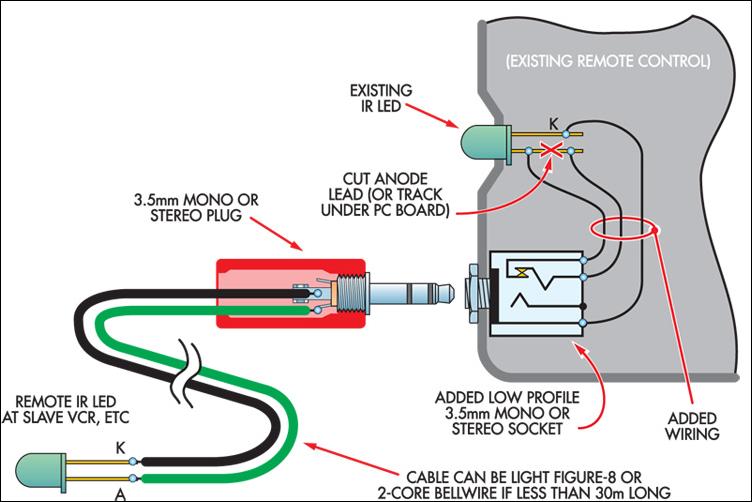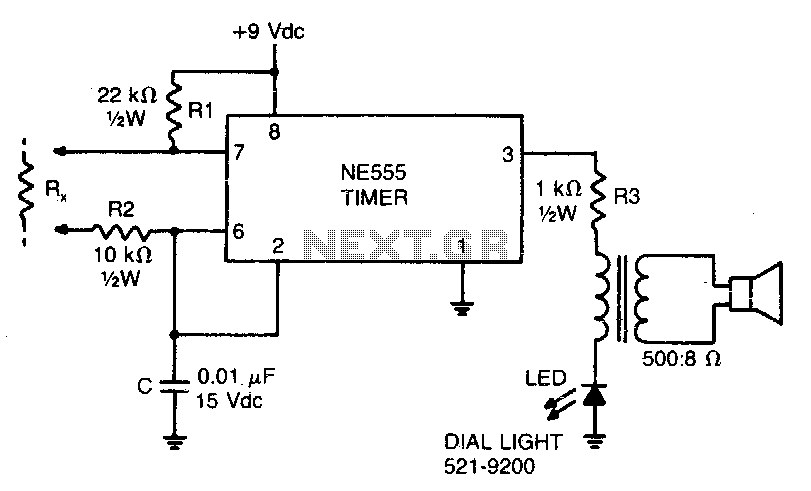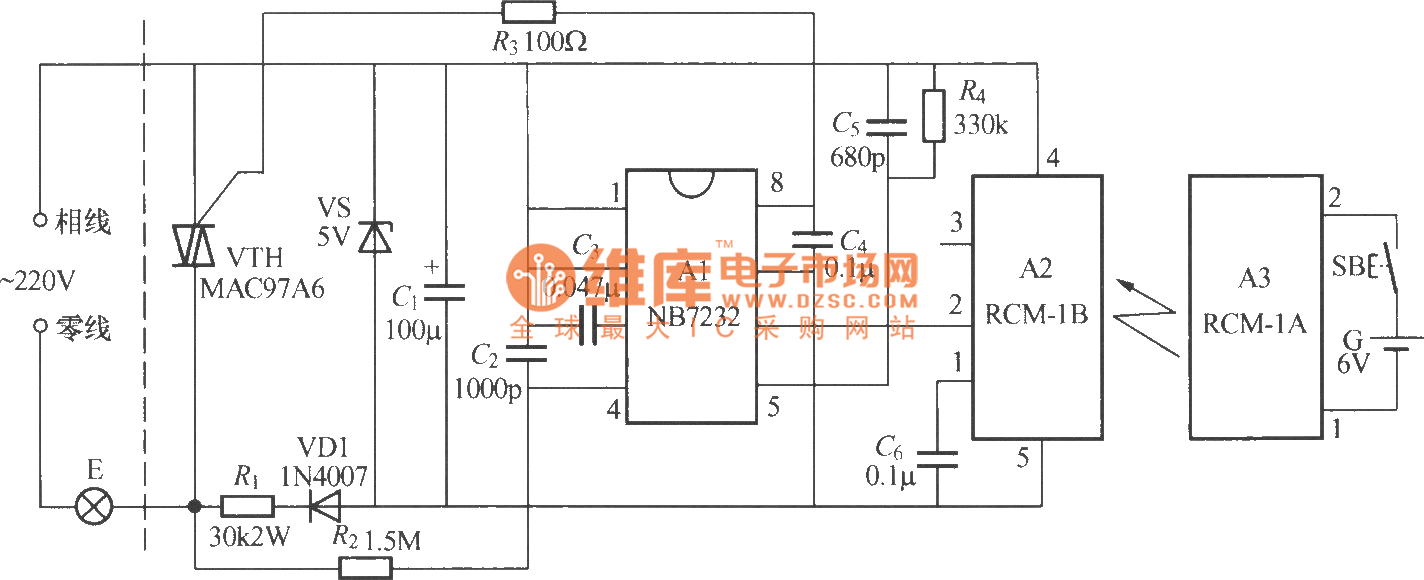
remote tester
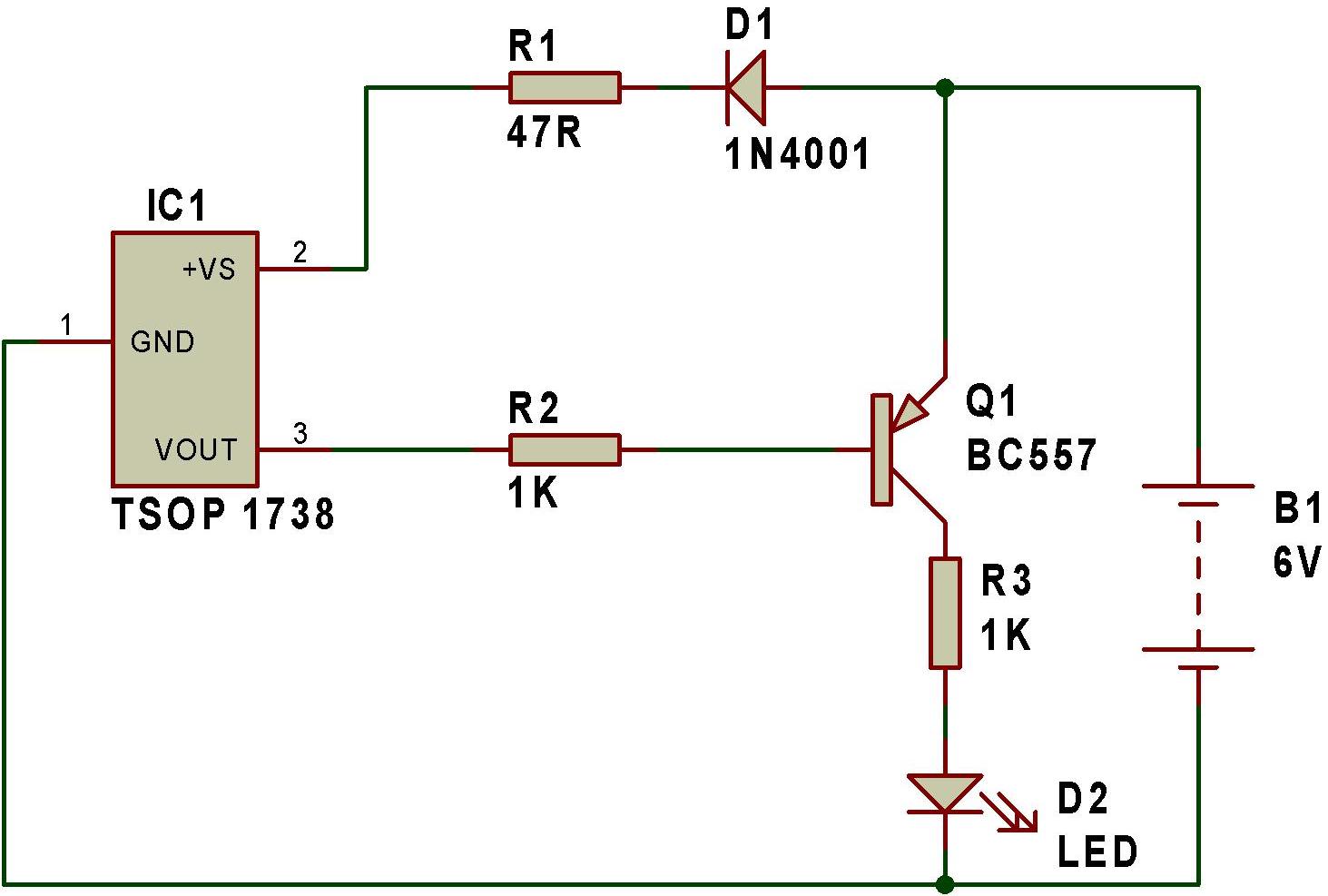
The remote tester circuit operates similarly to a dark sensor using a BC557 transistor. An LDR has been substituted with an IR sensor, specifically the TSOP 1738. The circuit functions as a remote tester; when a remote control switch is activated near the IR sensor, it turns on the LED D2.
The remote tester circuit is designed to detect infrared signals emitted by remote controls, utilizing the TSOP 1738 IR receiver module. This component is sensitive to the modulated infrared light typically emitted by remote control devices, allowing it to effectively capture signals. The BC557 transistor serves as a switch in the circuit, enabling the LED D2 to illuminate when an infrared signal is detected.
In operation, when the remote control is pointed towards the IR sensor and a button is pressed, the TSOP 1738 receives the signal. This signal is processed by the circuit, activating the BC557 transistor, which in turn allows current to flow through the LED D2, causing it to light up. This visual indication confirms that the remote control is functioning and that the signal is being transmitted successfully.
The circuit can be powered using a standard power supply, and the component values can be adjusted based on the desired sensitivity and response time. For instance, the use of capacitors and resistors in conjunction with the TSOP 1738 can filter out noise and improve the reliability of the signal detection.
This remote tester circuit is compact and can be integrated into various applications where remote control functionality needs to be verified, making it a valuable tool for electronics enthusiasts and professionals alike.Remote tester circuit also resembles the logic of a dark sensor (using BC557) . LDR has been replaced with IR sensor TSOP 1738. The circuit works as a remote tester. Pressing a remote control switch near the IR sensor, switches on the LED D2. I am Sagar Sapkota living in Espoo, Finland. I have done Master`s degree in Electronics and Communicatio ns with major in Electronics Productization from the University of Turku, Finland. I love to share my electronics works with the world. You can buy my kits at buildcircuit. org. - Sagar Sapkota 🔗 External reference
The remote tester circuit is designed to detect infrared signals emitted by remote controls, utilizing the TSOP 1738 IR receiver module. This component is sensitive to the modulated infrared light typically emitted by remote control devices, allowing it to effectively capture signals. The BC557 transistor serves as a switch in the circuit, enabling the LED D2 to illuminate when an infrared signal is detected.
In operation, when the remote control is pointed towards the IR sensor and a button is pressed, the TSOP 1738 receives the signal. This signal is processed by the circuit, activating the BC557 transistor, which in turn allows current to flow through the LED D2, causing it to light up. This visual indication confirms that the remote control is functioning and that the signal is being transmitted successfully.
The circuit can be powered using a standard power supply, and the component values can be adjusted based on the desired sensitivity and response time. For instance, the use of capacitors and resistors in conjunction with the TSOP 1738 can filter out noise and improve the reliability of the signal detection.
This remote tester circuit is compact and can be integrated into various applications where remote control functionality needs to be verified, making it a valuable tool for electronics enthusiasts and professionals alike.Remote tester circuit also resembles the logic of a dark sensor (using BC557) . LDR has been replaced with IR sensor TSOP 1738. The circuit works as a remote tester. Pressing a remote control switch near the IR sensor, switches on the LED D2. I am Sagar Sapkota living in Espoo, Finland. I have done Master`s degree in Electronics and Communicatio ns with major in Electronics Productization from the University of Turku, Finland. I love to share my electronics works with the world. You can buy my kits at buildcircuit. org. - Sagar Sapkota 🔗 External reference
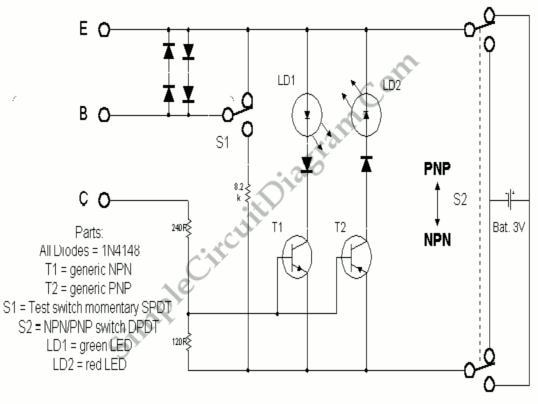
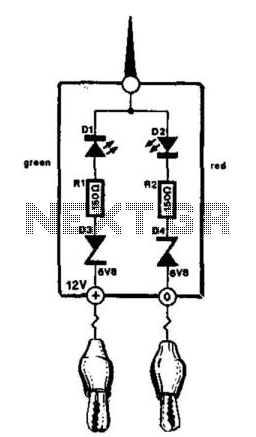
.jpg)
